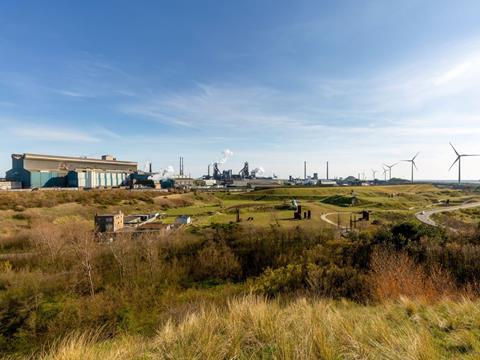
Tata Steel Nederland has launched Zeremis Carbon Lite, a green steel solution that reportedly offers a 30% reduction in CO2 intensity compared to the European average, as part of its aim to eliminate CO2 emissions by 2050.
Tata Steel claims to have been working on solutions to reduce the CO2 emissions of steel since 2018. The company’s Ijmuiden steelworks reportedly offers a CO2 intensity for steel production that is 7% lower than the European average and almost 20% below the global average.
To reduce the emissions of steel production on a large scale, Tata Steel says it has committed to switching to green hydrogen-based steelmaking. The company is aiming to reduce CO2 emissions by at least 30% by 2030 and to emit 75% less CO2 by around 2035, with the ultimate goal of eliminating CO2 emissions by 2050.
In addition, Tata Steel has commissioned its first Direct Reduced Iron (DRI) installation for 2030. The company is aiming to reduce CO2 emissions by 500 kilotonnes before the installation of the DRI and to supply a minimum of 200 kilotonnes of CO2-neutral equivalent steel annually.
The company has also announced Zeremis Carbon Lite steel, which reportedly offers a 30% reduction in CO2 intensity compared to the European average for steel products, such as hot-rolled coil or cold-rolled coil. For customers that have higher CO2 emissions reduction targets, the company notes that additional reduction certificates can be allocated.
The low-carbon steel is intended for consumer-facing industries including automotive, packaging, and white goods, where Tata Steel claims demand is high. The company intends to implement additional green steel products in the new future to continue meeting this demand.
Tata Steel adds that the lower CO2 intensity is certified by independent assurance expert DNV. The independent assurance by DNV is designed to ensure that Tata Steel’s methodology used to calculate CO2 emission savings is robust, and that the CO2 emission savings are calculated and allocated in an appropriate way.
According to the company, DNV performed a limited assurance engagement in accordance with the International Standard on Assurance Engagements 3000, and used the WRI/WBCSD GHG Protocol for Project Accounting and Reporting Standard as part of the criteria.
Hans van den Berg, chairman of the board of management of Tata Steel Nederland, comments: “We see an increasing interest in more environmentally-friendly produced steel in the markets we serve.
“This is most keen in our consumer-facing customers with their own ambitious CO2 reduction targets as the use of low-CO2 steel enables them to reduce their so-called Scope 3 emissions and thus make their product offering more sustainable.
“We firmly believe green steel is the future. We will be making steel in a different way before 2030, with less impact on our immediate surroundings and neighbours.
“As a result of our current CO2 savings we can already offer our customers a significant amount of high-quality low-CO2 steel. This makes the launch of Zeremis Carbon Lite an important step since passing on our savings to our customers helps us to accelerate our transformation to become a more sustainable steel producer.”
Earlier this year, H2 Green Steel revealed that it has already sighed off-take supply agreements for over 1.5 million tonnes of its green steel, which will be products from 2025 onwards – apparently further demonstrating industry demand for this solution.












No comments yet